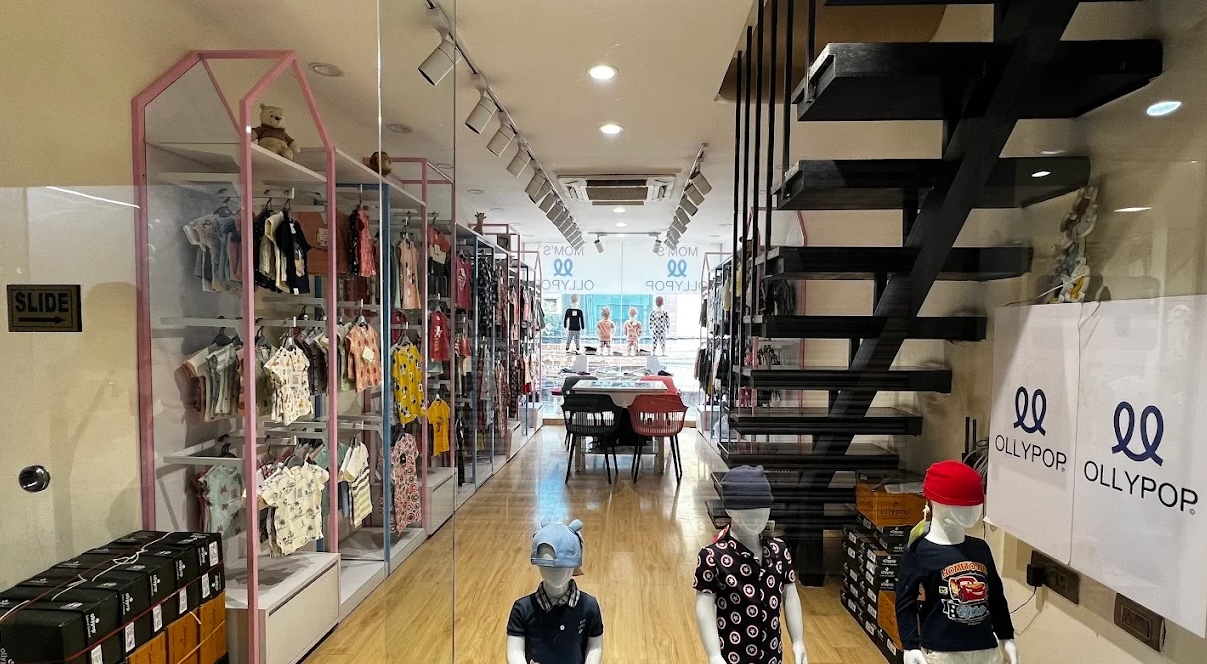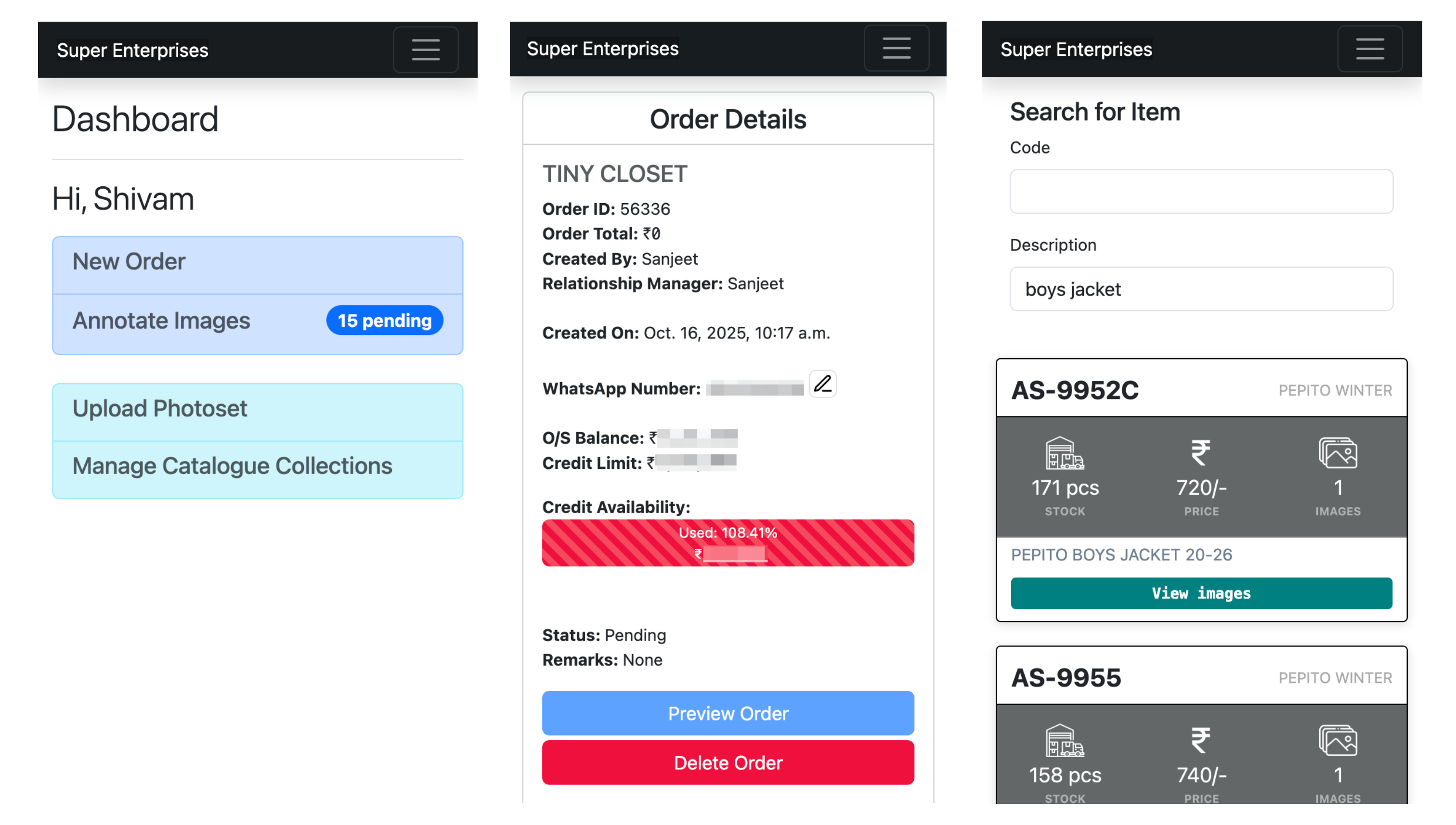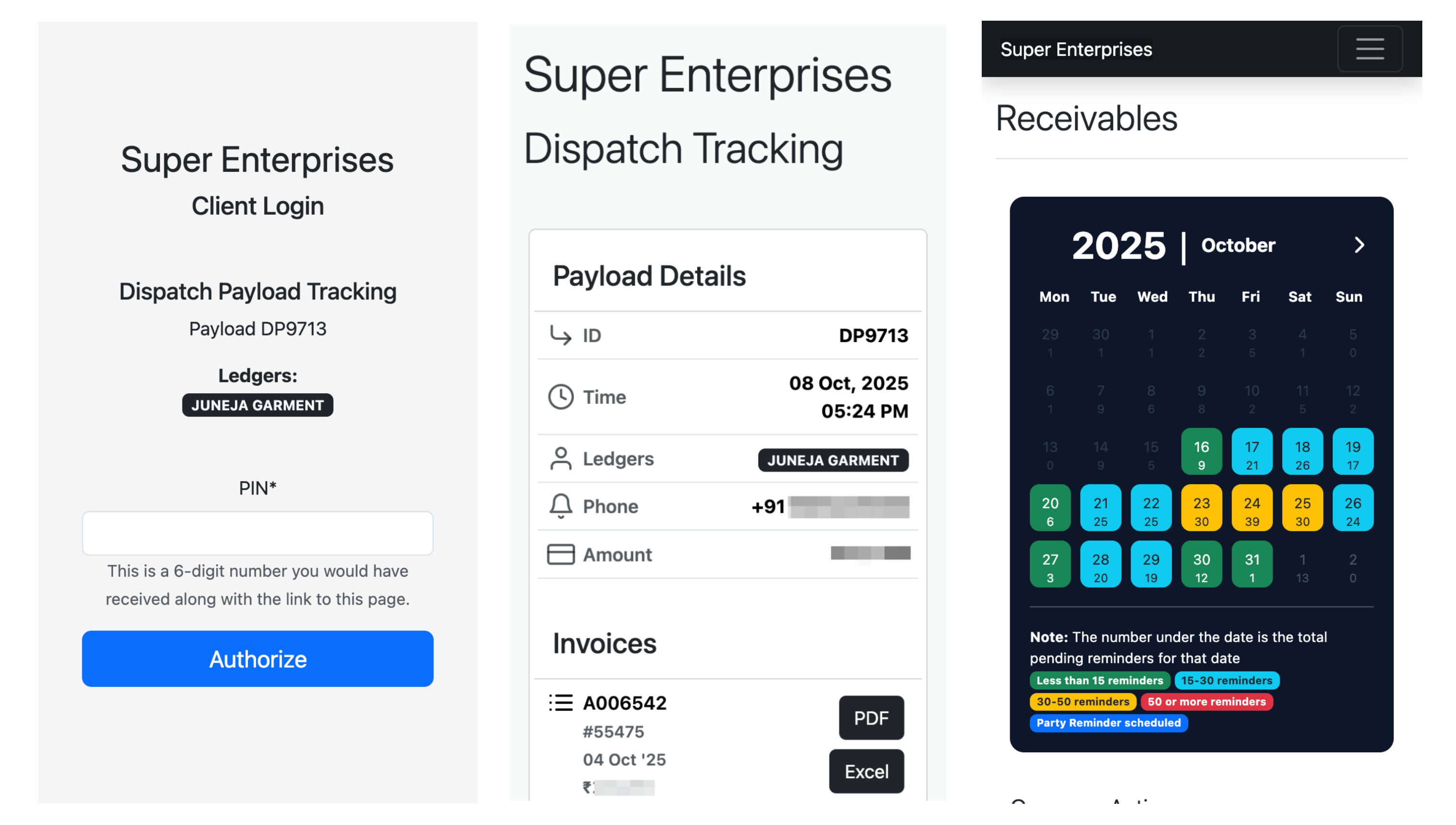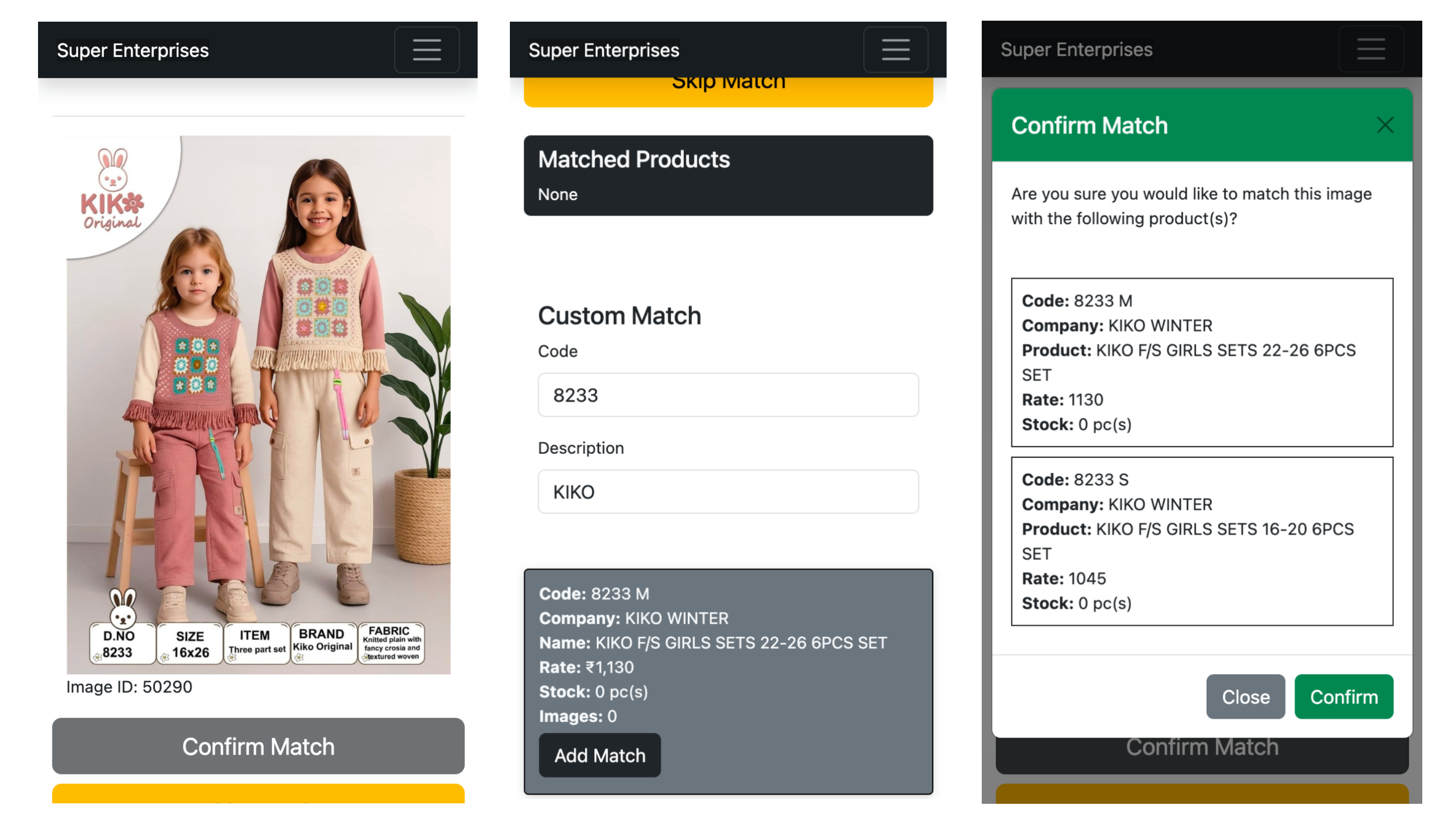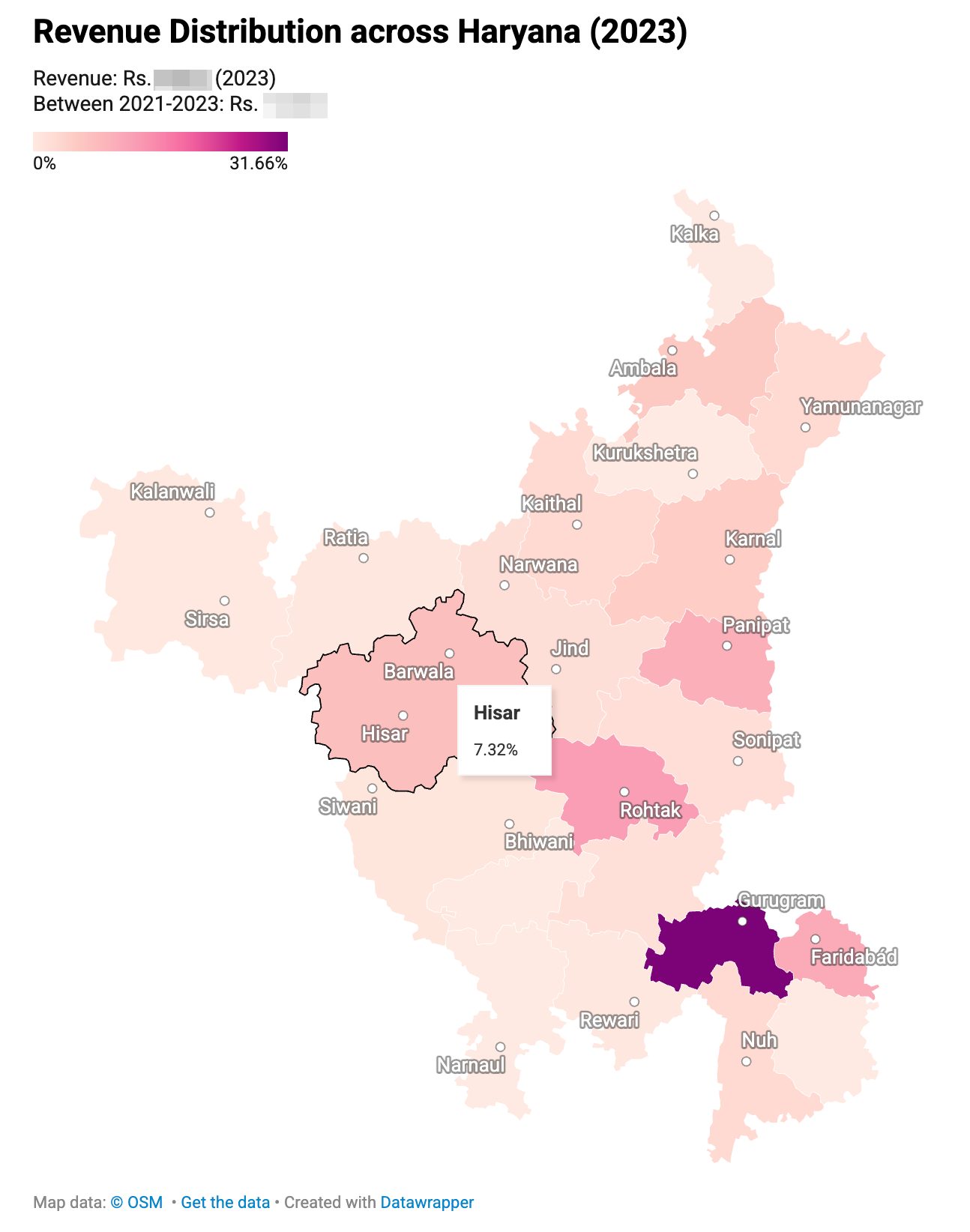Super Enterprises
At Super Enterprises, I built digital systems that brought structure and data visibility to a rapidly growing traditional wholesale business - developing tools that integrated with a legacy ERP while remaining simple enough to be used by a non-technical workforce.
Disclosure: This business is owned and run by my family
About Super Enterprises
Super Enterprises is a wholesale distributor of infant garments and accessories based in Ghaffar Market, Karol Bagh, New Delhi. Founded in 1997, it supplies over 1,000 retailers across North India, offering a wide range of products sourced from multiple domestic brands.
My Role
I first came in to fix a bottleneck in the sales and billing process. The solution seemed straightforward: the business needed a point-of-sale system. The ERP already had a PoS module, so I expected to implement it in a few days and move on.
That quick project turned into an 18-month transformation, spanning finance, operations, and analytics. Each initiative involved designing digital systems tailored to the context of an MSME in the unorganised sector - integrating legacy workflows, digitizing paper-based processes, and designing tools usable by a workforce with limited digital experience.
Key Contributions
1. Web App
Once off-the-shelf solutions proved inadequate, I began working directly with the ERP’s API. This led to the development of a custom PoS system that any staff member could access on their smartphones. This immediately removed two long-standing bottlenecks:
- Inventory data became decentralised
- Sales data entry work became distributed, rather than being limited to ERP operators with technical knowledge
Over time, this application evolved significantly to improve operational efficiency. Some important additions include:
- A portal for clients to access order invoices, dispatch status; automated messages relating to order information.
- A module for accounts receivable management: scheduling collection reminders, along with keeping detailed records of past interactions
The web application is now used daily by sales and dispatch teams, serving as a central repository of all business critical information.
On the technical front, the main challenge was building a robust pipeline to integrate with a legacy ERP that had almost no documentation. Being the sole developer, I managed everything from architecture to deployment. I learnt about optimising data ingestion routines, setting up cronjobs, and designing intuitive interfaces for non-technical users.
With the core sales workflows stabilised, the next challenge was bringing visibility to inventory and product data
2. Digital Catalogue
With sales accelerating online after the COVID-19 lockdowns, managing digital sales of over 8,000 SKUs posed a unique set of challenges for this wholesale business.
Initially, online sales ran through WhatsApp - via broadcast lists and customer groups. Factories sent product images that were forwarded to clients periodically or shared in response to inquiries. The result was a web of inefficiencies: when new images arrived, older ones became impossible to track; salespeople couldn’t tell which items were still in stock, or how many units remained.
To address this, I designed a web-based catalogue system that centralised all product images and linked them directly to live inventory data. This involved creating a process simple enough to be carried out routinely by a team with limited digital expertise, despite the constantly changing SKUs of the business. After several iterations, we narrowed it down:
- Team members upload ZIP files of images received from factories
- The system filters duplicates, compresses the images, and uploads them to the cloud
- Any staff member could then visit the “Annotation” page on the web app, which randomly displayed an unannotated image and prompted them to select the corresponding product(s)
This transformed how the sales team worked: instead of scrolling through message histories, they could now browse an organized, image-rich catalogue, respond to customer inquiries instantly, and sell with far greater accuracy.
What began as an internal efficiency tool eventually evolved into a customer-facing digital storefront - bridging our internal systems with a new digital sales channel.
3. Finance and Strategy
While financial records were well maintained, they weren’t ready for analysis. I began resolving inconsistencies across different financial years, matching varied ledger names to distinct clients, using entity resolution software. Additionally, we undertook a systematic annotation exercise to add proper address data against each ledger in our books.
Once the data was cleaned, we could finally ask questions that guided real business strategy.
- Which clients are growing? Which ones are stagnant? This helps drive credit-related decisions
- How much of our revenue comes from each state?
- Which districts of these states are we present in? Are there gaps in our presence?
These insights also led to concrete process improvements:
- Introduced credit limits for clients to systematise the billing procedure
- Set up processes for payment collections, starting with monthly collection goals for each client, along with a dedicated team to follow up.
- Introduced quarterly sales commissions to incentivise sales growth
Together, these steps turned passive financial records into active management tools - informing credit decisions, sales incentives, and recovery goals.
4. Documentation, Branding, Communication
To improve business processes, it was essential to document existing workflows. For those who perform them daily, much of this knowledge is implicit. For newcomers, the challenge lay in asking the right questions and observing closely. I spent a significant amount of time trying to understand the journey of a simple sales order - how does a sale begin? What are the feedback loops between our teams and customers? What data is necessary to make credit-related decisions? Who has the authority to do so?
Such rapid changes naturally created friction and uncertainty. I often acted as a bridge between individuals and teams - translating concerns, interpreting feedback, and distinguishing between process issues and personal ones. Though less visible than the systems themselves, this culture of open dialogue and documentation has been central to sustaining long-term improvement.
